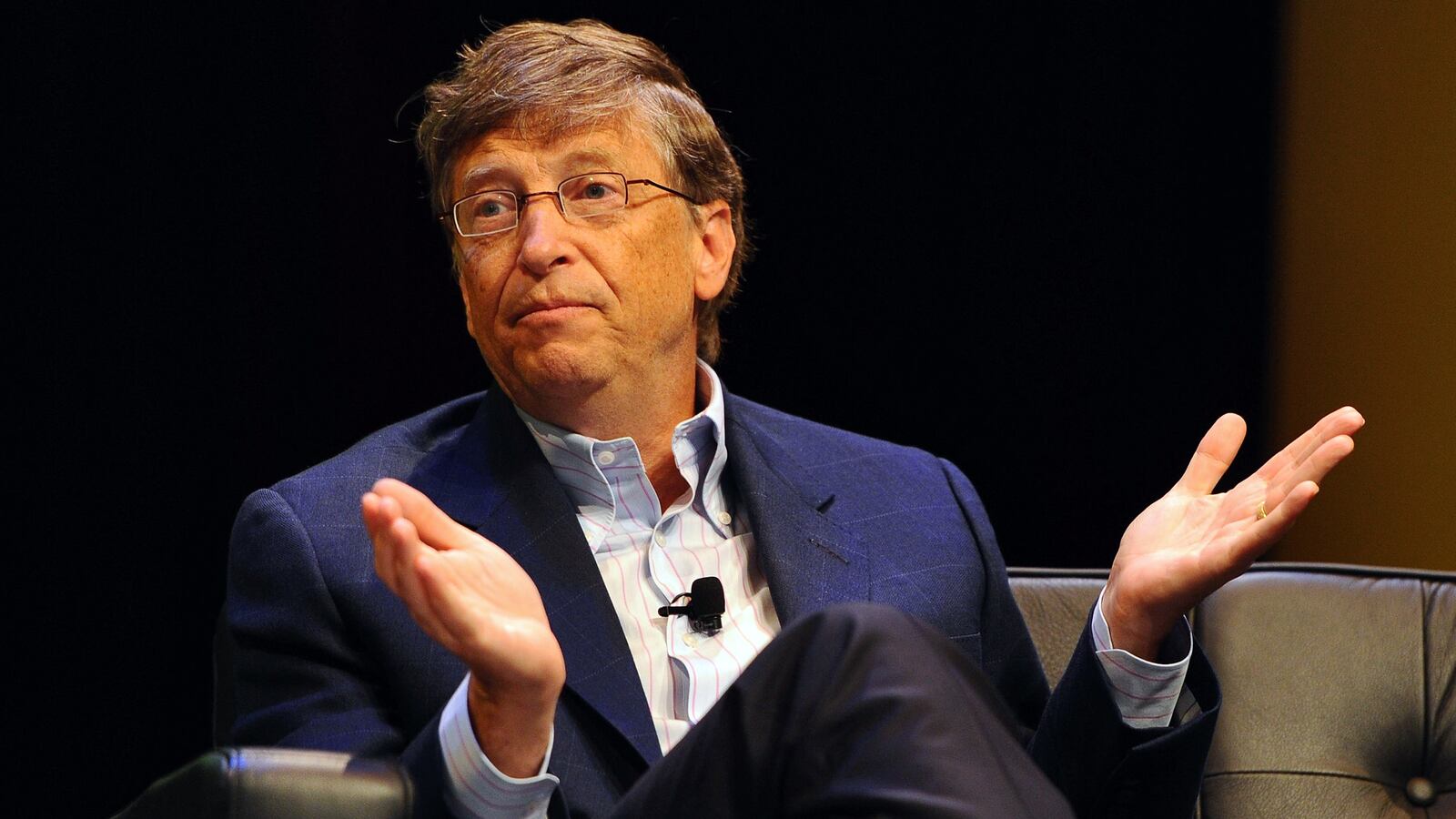In a surprising letter to employees released today, Microsoft CEO Satya Nadella announced that the company would be firing 18,000 people over the next year. It’s the largest layoff sweep in the company’s 39-year history, amounting to 14 percent of its overall labor force. The company is slating at least $1 billion to pay for severance and other related costs alone. In the letter, Nadella, who was named CEO in February of this year, explains that the cuts are an attempt to “realign our workforce” and “simplify the way we work to drive greater accountability, become more agile and move faster.”
The logic of the cuts, which place Microsoft above Google, Intel, and HP in layoffs as a percentage of staff since 2011, according to The Verge, points toward a new direction for the technology giant with a renewed focus on providing business-to-business services like cloud infrastructure.
But the language of the CEO’s letter also suggests something deeper. In the age of the 5-year-old WhatsApp, a messaging service bought by Facebook last February for $19 billion, the other major technology players of the past suddenly don’t seem so fresh anymore. Microsoft is in the midst of a start-up identity crisis.
In today’s letter, Nadella repeatedly emphasizes words like “agile,” “efficient,” and “lean.” The latter in particular has become a buzzword for Silicon Valley start-ups. The “Lean Start-up” is a business philosophy created by entrepreneur Eric Ries that prizes “bootstrapping”—that is, taking as little venture-capital funding and operating with an eye toward as much profit as possible, as soon as possible. Bureaucratic overhead is bad, and that’s exactly what Microsoft has too much of.
Microsoft is looking to lean start-up adherents like Instagram, acquired by Facebook for $1 billion when it had just 13 employees, and Dropbox, now estimated at $10 billion, for inspiration in its own business. “We plan to have fewer layers of management, both top down and sideways, to accelerate the flow of information and decision making,” Nadella writes. “Our business processes and support models will be more lean and efficient with greater trust between teams.” In other words: cut out the fat, remove middle managers, focus on what makes the business run, and be more like a start-up.
That plan is pleasing investors: After the layoffs were announced, Microsoft stock jumped 3.8 percent to a 14-year high. Wall Street loves layoffs, after all. It also helps that around 12,500 of the employees to be let go are from Nokia, the Finnish phone maker that Microsoft acquired last year. This means that the total layoff is only five percent of Microsoft’s non-Nokia staff, but that’s still a sizable chunk of the workforce. That the cuts are weighted toward Nokia also shows that the company is acknowledging that buying the hardware business was a mistake, as many have argued. In the new, leaner strategy, any bloat has to go, even if it means reversing on a major earlier decision. While some layoffs as a result of the acquisition were inevitable, the scale of the cuts outlined in the letter is more drastic than business as usual.
In the past several months, talk of a technology bubble has become more commonplace even as Yo!, an app whose only purpose is sending the eponymous greeting to friends, immediately netted a $1 million investment after going viral. What Microsoft has become known for—producing effective consumer and professional technology—has become far less exciting than the smaller companies gathering audiences of young users who form the future of consumption. As the older company’s products and practices age, Facebook is becoming a kind of proto-Microsoft, nabbing companies like the virtual reality helmet Oculus in bets to land on the next big thing.
To maintain its relevance and grab investors’ attention, Microsoft needs to keep moving. In an infamous, prescient 1995 memo, founder Bill Gates wrote, “The Internet is a tidal wave. It changes the rules.” Previously, the company profited from that change. Now it’s finding itself on the wrong side of the wave.
To correct the course, they’re investing in the dynamic markets where younger competitors are already succeeding. “We live in a mobile-first and cloud-first world,” Nadella wrote in a memo on July 10. “We will create more natural human-computing interfaces that empower all individuals. We will develop and deploy secure platforms and infrastructure that enable all industries.” The CEO describes the company as a “productivity and platform company.” The plan is to build a holistic cloud operating system for businesses and individuals, enabling a new generation of work and play.
Yet Microsoft still faces the brand issue of being terrifically un-hip. Other big tech companies are meeting this start-up identity crisis by meeting the millennial market where the consumers already are.
Yahoo is pushing into the content business by turning itself into an advertising company. Its $1.1 billion deal for Tumblr, the youth-friendly blogging platform, gave it a badly needed image overhaul as well as access to an entirely different audience. The company is plowing money into Yahoo News content channels like Tech and Politics, snapping up brand-name journalists, and attempting to monetize their traffic with a new ad engine, Yahoo Ad Manager Plus. The volume of Yahoo’s display advertising is up by 24 percent, according to a recent report, but the price of the advertising has also fallen 24 percent.
Google, in contrast, seems to be moving toward hardware. The company has recently acquired Titan Aerospace, a drone manufacturer that Facebook was also vying for; Boston Dynamics, a military contractor responsible for developing battlefield robotics; and Nest, a designer of in-home products like smart thermostats and fire alarms. Together, these purchases suggest an investment in the “Internet of Things,” a growing body of products that bring Web connectivity into functional everyday devices.
While Google and Yahoo are developing their chosen niches with major acquisitions, Microsoft’s credo of staying lean could set them apart—at least for a while. But just like the rise of Apple, arguably one of the leanest, best-positioned tech companies to weather the coming years, the winner will be whoever lands on the product that defines the next new market, as the iPhone changed the landscape of personal technology. What that will be is anyone’s bet, and it could be discovered by a team of 10 just as easily as 10,000.






